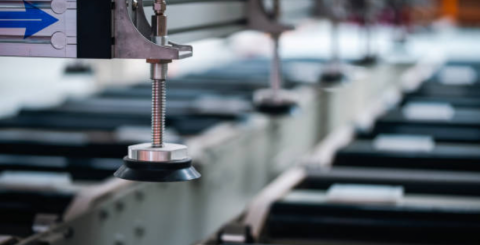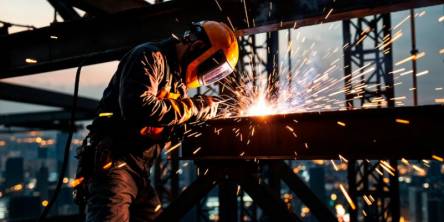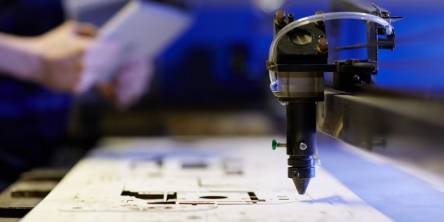Exploring the World of Metal Table Legs: Design Trends and Innovations

When it comes to furniture design, one cannot overemphasize the importance of metal table legs, no matter how small they may be. These elements are not only the structural components but also determine the appearance and use of the tables. Most of the innovations in this area are derived from screw manufacturing firms that are constantly improving the technology and designs that hold and reinforce the metal table legs and their appearance.
Factors
The current trends in metal table leg designs are therefore a combination of modern looks, eco-friendliness and technology. Currently, designers are in close contact with screw manufacturing companies to ensure that they come up with legs that are flexible and can be used in different designs and functions. Ranging from simple designs with smooth and straight legs to complex designs with artistic base, the options are numerous. Another trend is the use of recycled materials as the demand for environmentally friendly furniture products is constantly increasing.
New Technologies
Manufacturers of screws have been on the forefront in determining the technological advancement that affects the design and functionality of metal table legs. Some of these innovations include the creation of new types of screws that provide stronger and more secure joints hence increasing the stability and the weight bearing capacity of the tables. Also, the development of corrosion-resistant coatings and magnetic screws is increasing the sturdiness of metal table legs and their ability to withstand different climates.
Impact of Globalization
The global market plays a major role in determining the design and utility of metal table legs. For instance, the need to produce metal table legs in Spanish-speaking countries has led to designs that are not only durable but also beautiful, incorporating both the traditional and the contemporary approaches to manufacturing. This cross-cultural exchange enhances the variety that is available in the market and gives the consumer a chance to select from a global list of designs.
The Role of Customization
Flexibility is another aspect in the world of metal table legs and this is because products developed by screw manufacturing firms can be customized. Customers are now able to order legs that are made to order for a particular design or size, which is ideal for special areas or themed designs. This level of customization is revolutionizing the way designers and the public view furniture, making it a cornerstone of individual and business space planning.
Possible Developments
As for the future, metal table leg design is expected to become even more creative. Manufacturers of screws are now developing smart screws that can be adjusted to the height and stability of the structure as required by the users. Furthermore, there is a trend towards the incorporation of technology, for example, charging ports and IoT compatibility, which may completely change the way people use furniture in familiar environments.
Designers and screw manufacturing companies will remain the key players in the development of these innovations. With the advancement of technology and the incorporation of sustainable materials, the simple metal table leg is set to become one of the most important elements of contemporary furniture design, both functional and aesthetic. The process of discovering and creating in the realm of metal table legs is only just starting, and there are many interesting prospects for both the buyer and the entire industry.
As these innovations continue to evolve, we can expect even more groundbreaking designs and functionalities that will redefine modern furniture. This ongoing evolution promises a future where metal table legs not only support our furniture but also enhance our living and working spaces in unprecedented ways.
Similar Articles
When you see a steel ship in the harbor, the first impression is usually sheer scale.
Explore CNC turning—its components, process, benefits, applications, and future trends shaping modern precision manufacturing in various industries.
In the competitive industry of car manufacturing, attaining exceptional performance along with an innovative design needs the incorporation of modern manufacturing technologies
Facing delays, quality issues, or supply chain problems in hardware manufacturing? Learn the top 7 challenges—and practical fixes—to streamline production.
In the rapidly advancing landscape of high-tech manufacturing, electronics, and materials science, diamonds are no longer just gemstones they’re high-performance materials redefining what’s possible in technology.
A business in the manufacturing industry today has to ensure that it chooses the precision-engineered components suppliers keenly since the competition is very stiff
Selective Laser Sintering, or SLS, has established itself as one of the most reliable and widely used 3D printing technologies. This method is valued for its ability to produce complex, durable, and high-quality parts without the constraints of traditional manufacturing.
In the retail and display industry, the visual appeal of products is paramount. Customers are constantly drawn to displays that are not only eye-catching but also provide an immersive experience.
As previously established, CO2 laser technology operates by shining a high-power infrared beam on a mixture of gas that contains carbon dioxide, nitrogen, and helium. This technology is well known for the fact that it is able to engrave onto a variety of materials such as wood, glass, plastic, leather, and even some metals with high precision and without contact.









